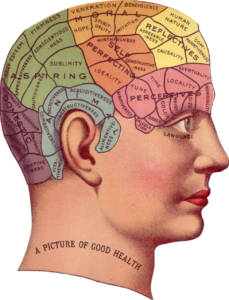- Calls to this hotline are currently being directed to Within Health, Fay or Eating Disorder Solutions
- Representatives are standing by 24/7 to help answer your questions
- All calls are confidential and HIPAA compliant
- There is no obligation or cost to call
- Eating Disorder Hope does not receive any commissions or fees dependent upon which provider you select
- Additional treatment providers are located on our directory or samhsa.gov
Are Foods like Drugs of Abuse: The Science Behind Foods Triggering Binge Eating and Loss of Control

COVID 19 epidemic responses included a stay at home orders, lockdowns, and quarantines. Many people have changed food preferences, abandoned healthy eating, and relapsed into patterns of binge eating and overeating [1]. Our relationship with food is complicated. We describe some foods as comforting or comfort food and others as a form of self-medication [2].
The sight and smell of certain foods and commercials for junk manufactured foods are often described as triggers for loss of control, eating disorders, and treatment remission relapse. We make choices about what to buy, what to order online, and what to pick up at the grocery, but what drives these choices? Is a nutritional or starvation or need vs. desire or pleasure?
Advertising makes a difference. Food advertising is focus-group-tested to engage teens and promote eating highly processed, unhealthy food loaded with fat and sugar. Manufactured food, meals are eaten with a combination of interacting foods, and food availability makes essential differences as well. Some experts like Ashley Gearhardt, Ph.D., suggest that “The inundation of junk food advertising is contributing to the rising rate of teen binge eating, overeating, and obesity.”
The food industry spends at least $15 billion on advertising to influence Americans’ food choices. Brand recognition and trying it may be followed by repeated use, binge use, and even addiction-like behaviors if the food is manufactured to have drug of abuse-like properties. Cigarettes were the largest advertisers in the USA at one point.
But, currently, the U.S. food system is the second-largest advertiser in the American economy. Like tobacco did in the past, getting adolescents to try the food, build brand awareness, develop a preference, and brand loyalty is the first step. The next step is to have a product that is very, very compelling.
According to the CDC, 20.6% of those aged 12 to 19 are obese. How could this have happened? Some have focused on sugar as it is self-administered by laboratory animals and has many other similarities to alcohol and other drugs of abuse.
Sugar is added to all sorts of foods, to make them more palatable and compelling. Sugar might be one key. But, humans prioritize and value both fatty foods and carbohydrate-rich ones. But in this case, 1 + 1 does not equal two but more like 4.
New experiments from Dana Small’s Yale University group clearly show that people place the highest value on foods that combine carbohydrates and fat. Attachment to such food combinations is tremendous, and the current COVID 19 anxiety and fear may make these junk and manufactured foods even more reinforcing and in demand.
Most experts think that the consciously perceived hedonic qualities of food are the main driver of binge eating and overeating [3]. These are the strongest and most irresistible top-down influences, and the feedback loop from the stomach and gut rarely inhibit uncontrolled eating in time or at all.
A newly discovered subcortical body-to-brain neural pathway linking gastrointestinal food sensors to the brain’s reward regions have made it logical to assume that unconscious factors may play an important role. Additionally, these gut-brain reward pathways taste and aroma sensory receptors and reinforce eating independently of the higher brain controls on consumption and any calorie risk-benefit analysis ( de Araujo IE, Schatzker M, Small DM. Rethinking Food Reward. Annu Rev Psychol. 2020;71:139-164. doi:10.1146/annurev-psych-122216-011643).
 Our brain–the reward system of our brain–evolved at a time where food was scarce. It evolved to be sensitive to calories and to motivate us to find the foods in our environment that had the most calories. And if we think about that from early human history, that would be foods that were higher in fat like perhaps animal meats or nuts, or foods that had a high amount of naturally occurring sugar like a berry. The two together give us a bigger reward response.
Our brain–the reward system of our brain–evolved at a time where food was scarce. It evolved to be sensitive to calories and to motivate us to find the foods in our environment that had the most calories. And if we think about that from early human history, that would be foods that were higher in fat like perhaps animal meats or nuts, or foods that had a high amount of naturally occurring sugar like a berry. The two together give us a bigger reward response.
While overeating, binge eating, and current hypotheses of obesity are sometimes difficult to test in an experiment, it does appear that thinking about overeating as succumbing to hedonic signals or the orosensory pleasure experienced during eating is overly simplistic. Certainly, being obese does not appear to make milkshakes more pleasurable or palatable. (Wall KM, Farruggia MC, Perszyk EE, et al. No evidence for an association between obesity and milkshake liking [published online ahead of print, 2020 May 12]. Int J Obes (Lond). 2020;10.1038/s41366-020-0583-x. doi:10.1038/s41366-020-0583-x).
Humans place a high premium on foods that contain both fats and sugars. Yale University School of Medicine volunteers placed monetary bids on a variety of foods. Yale researchers showed that foods containing both fat and carbohydrate are more rewarding, calorie for calorie, than those containing only fat or only sugar.
Volunteers paid the most for cake, chocolate, and other fatty, sugary treats. These are the trigger foods identified by Gearhardt and Avena [4] in their food addiction studies. Energy-dense food alters dopaminergic (DA) transmission in the mesocorticolimbic (MCL) system and can promote reward dysfunctions, compulsive feeding, and weight gain.
Portion size and estimated energy density, whether accurate or not, played little role in reward in the healthy-weight sample. The researchers continued this study by doing brain scans when subjects were thinking about sweet and fatty snacks.
Just thinking about these foods produced significant increases in activity in cerebral areas involved with habit formation and reward. These brain scans show the brain regions and networks (caudate, putamen, and mediodorsal thalamus) underlying this fat + sugar effect.
Dana Small’s [5] volunteers rated other foods as less compelling or enticing. They were willing to pay less in dollars to equally liked and equally caloric foods, like cheese, that are rich in only one nutrient. Combining fat and sugar increases the reward value of foods independently of the total number of calories and distorts the ability to estimate the energy density of fatty foods accurately.
Binge and trigger foods, such as pizza, are a good example of our love for fat- and carbohydrate-rich foods. Loss of control of these combination foods and food manufactured to be combinations may cause obesity and overeating. These results imply that a potentiated reward signal generated by foods high in both fat and carbohydrate may be one mechanism by which a food environment rife with processed foods high in fat and carbohydrate leads to overeating.
Dietary Triglycerides (T.G.s) directly alter signaling in the reward circuit to regulate behavior, thereby providing a new mechanistic basis by which energy-rich diets may lead to (mal)adaptations in DA signaling that underlie reward deficit and compulsive behavior. (Berland C, Montalban E, Perrin E, et al. Circulating Triglycerides Gate Dopamine-Associated Behaviors through DRD2-Expressing Neurons. Cell Metab. 2020;31(4):773-790.e11. doi:10.1016/j.cmet.2020.02.010).
Diet can change dopamine and, thus, mood and motivational behaviors. Dietary T.G. can directly alter MCL circuit functions and influence reward reinforcement and food-seeking behaviors by gating DRD2-MSNs activity and associated DA-encoded behaviors.
But is this enough to call food addiction or to diagnose food addiction with the Yale Food Addiction Test? Food addiction has been proposed as a clinical phenotype as DSM substance-related behaviors that comprise these disorders can be readily applied to sugars, everyday foods, and eating-related problems.
 The hedonic or brain’s reward system can account for the ingestion of foods and drugs, confirming that they share neural substrates that differentiate liking and wanting. Like gambling, gaming, and sex, these are considered as a possible behavioral addiction.
The hedonic or brain’s reward system can account for the ingestion of foods and drugs, confirming that they share neural substrates that differentiate liking and wanting. Like gambling, gaming, and sex, these are considered as a possible behavioral addiction.
Food addiction constitutes a medicalization of common eating behaviors, taking on the properties of the disease. (Finlayson, G. Food addiction and obesity: unnecessary medicalization of hedonic overeating. Nat Rev Endocrinol 13, 493–498 (2017). https://doi.org/10.1038/nrendo.2017.61) While scientists debate the merits of diagnostic classification, it is evident that certain foods and combinations of nutrients are reinforcing and share many common qualities with alcohol and other drugs of abuse.
Individual differences in dopamine dynamics could be inherited, but more likely, these systems are changed by the environment and experience. We know that alcohol has effects on development, and pregnant women are advised not to drink during pregnancy.
We also know that early alcohol drinking and binge drinking make alcohol use disorders more likely. Similar data have been reported for opioids, tobacco, and other drugs of abuse. Based on animal models, there seems to be a direct impact on what kinds of foods the babies prefer.
Acquired food preferences appear related to the development of the reward systems of the brain and how they are modified in utero and early life. Maternal consumption of excessive, highly processed junk foods, may change the baby’s system of reward and motivation.
It seems that the mother can change the baby’s dopamine-related pleasure system through the overconsumption of highly rewarding foods. So, we would expect these children of junk food eaters to be changed and altered in a way that drives these babies to have an extreme preference for junk foods themselves.
And, it might set these babies up not only to be more vulnerable for a preference for these junk foods but that they might also be prone later in life to be more likely to develop a wanting for addictive drugs like alcohol or amphetamines.
Obesity is a complex disease and has multifactorial etiology. It is the second most common cause of preventable death after smoking. One hope for reducing overeating, binge eating, and obesity has been the food industry and healthy living-eating trends.
However, while we were talking about adding salads to fast-food sales, the food industry has become so skilled and adept at making highly reinforcing, dense foods with just the right amount of fat and refined carbohydrates. Think of some of the top foods–things like ice cream, chocolate and pizza, and French fries and sugary stuff like sugar-sweetened beverages where people start to show these addictive behaviors.
Our patients may respond with bingeing, others with binge and purging, and the majority of us with loss of control and eating more than we intended. We keep trying to invoke discipline and control of appetite. But we are failing.
Obesity has become an epidemic that has worsened for the last 50 years[6]. In the United States, the economic burden is estimated to be about $100 billion annually. It’s not those naturally occurring foods like fruits and vegetables and lean meats and legumes. You know, I have never seen a patient asking for help for an addiction to vegetables or plants.
References:
1. https://www.nytimes.com/2020/06/16/well/eat/pandemic-snacking-junk-food-habits-eating-weight.html
2. https://www.wsj.com/articles/shoppers-stock-up-on-comfort-food-amid-pandemic-11587726462
3. Avena NM, Gold MS. Food and addiction – sugars, fats and hedonic overeating. Addiction. 2011;106(7):1214-1220. doi:10.1111/j.1360-0443.2011.03373.x
4. http://www.drnicoleavena.com/
5. https://medicine.yale.edu/profile/dana_small/
6. Panuganti KK, Nguyen M, Kshirsagar RK. Obesity. In: StatPearls. Treasure Island (FL): StatPearls Publishing; 2020.
About the Author:
 Mark S. Gold, M.D. served as Professor, the Donald Dizney Eminent Scholar, Distinguished Professor and Chair of Psychiatry from 1990-2014.
Mark S. Gold, M.D. served as Professor, the Donald Dizney Eminent Scholar, Distinguished Professor and Chair of Psychiatry from 1990-2014.
Dr. Gold was the first Faculty from the College of Medicine to be selected as a University-wide Distinguished Alumni Professor and served as the 17th University of Florida’s Distinguished Alumni Professor.
Learn more about Mark S. Gold, MD
The opinions and views of our guest contributors are shared to provide a broad perspective of eating disorders. These are not necessarily the views of Eating Disorder Hope, but an effort to offer a discussion of various issues by different concerned individuals.
We at Eating Disorder Hope understand that eating disorders result from a combination of environmental and genetic factors. If you or a loved one are suffering from an eating disorder, please know that there is hope for you, and seek immediate professional help.
Published on July 1, 2020.
Reviewed & Approved on July 1, 2020, by Jacquelyn Ekern MS, LPC
Published on EatingDisorderHope.com

The EatingDisorderHope.com editorial team comprises experienced writers, editors, and medical reviewers specializing in eating disorders, treatment, and mental and behavioral health.

